The process of designing a collection is not an easy task. Designers must consider many different factors and details, such as current trends in fashion or what people will want for their wardrobe next year when they start planning how you’ll dress yourself this season! But designers don’t rely only on guessing- most importantly at the beginning stages before any garment has been created -they use moodboards: concise visual diaries meant specifically so that all types of ideas can be assembled efficiently during design meetings later down the line.
What is a Fashion Moodboard?
A fashion moodboard is an extensive collection of images and objects that highlights a specific visual style in physical or digital form.
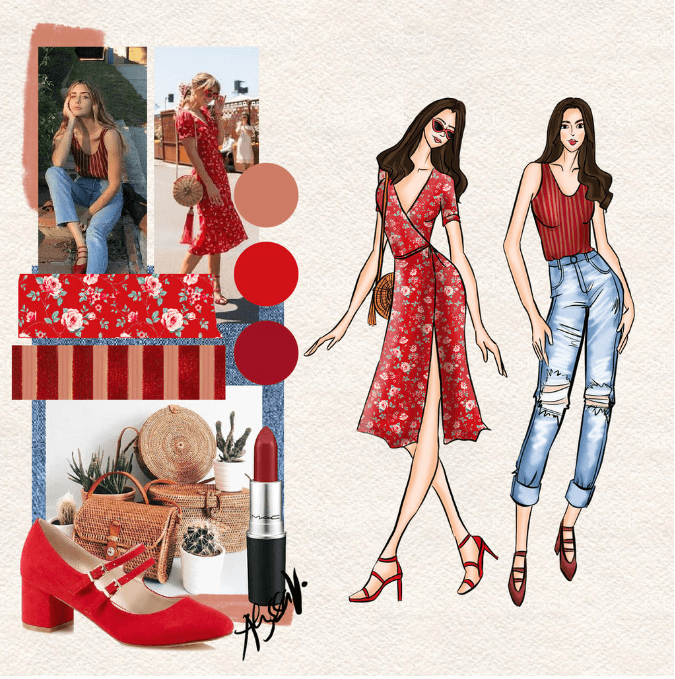
They can serve as pointers for designers trying to capture the essence of their designs by providing them with reference material they would not have access to otherwise; it also helps consumers when searching through styles that may be unfamiliar territory!
Moodboards should always contain classic pieces from centuries past alongside emerging trends, informing you about what’s trending right now. You can combine various looks to create a distinctive look.
So, whether you’re a fashion designer or a fashion enthusiast, create a moodboard to help you stay up-to-date with the latest trends!
What goes into a Fashion Moodboard?
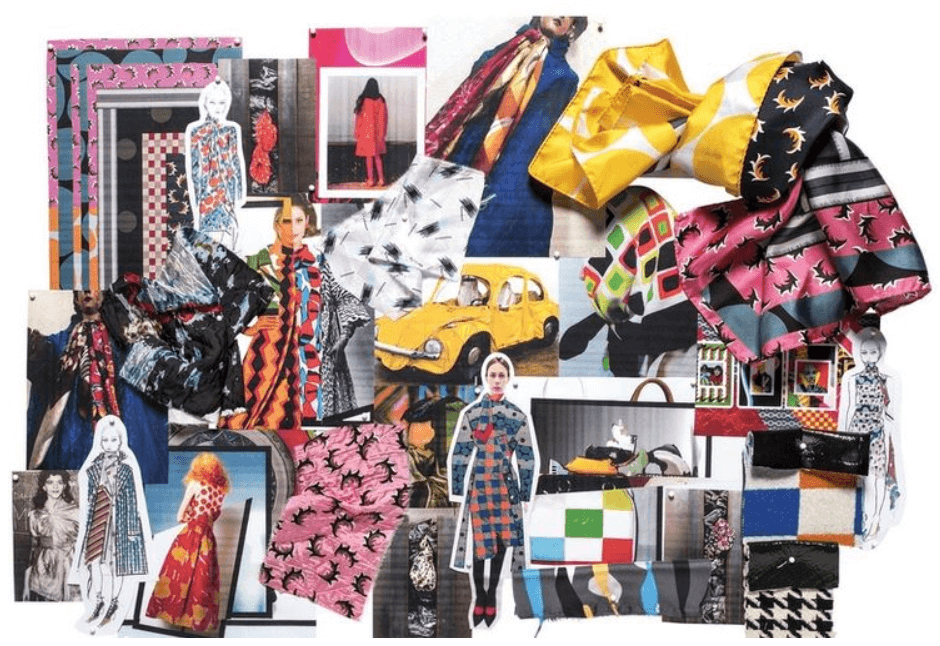
As anyone who has created a moodboard knows, the process starts with research. You need to find images that illustrate the feelings and emotions you’re trying to convey, both primary sources like catalogs or runway photos and secondary ones like fashion magazines or websites from other designers.
All these visuals must have pace – slow down enough so your viewers can take it all in without feeling too rushed while making sure there isn’t anything unnecessary to pad out space like things that will never appear anywhere else again once the moodboard is complete.
Of course, the research phase is only the beginning. Once you have a collection of images, you need to start arranging them in a way that makes sense and conveys the overall mood and message you’re going for. This can be a challenge, but it’s also one of the most creative parts of the process.
And once you’ve created a moodboard that you’re happy with, it can be a great tool for helping to bring your vision to life.
The primary objective of a fashion moodboard is to help the designer maintain focus.
Before you start putting together your dream wardrobe, you should keep a few things in mind.
- What is the purpose of your moodboard?
- Are you creating it for yourself to track your fashion evolution?
- Are you hoping to share it with others as a way to inspire them?
- Are you looking to use it as a professional portfolio piece?
- What is your budget?
- Are you looking to splurge on a few key pieces, or are you hoping to find affordable items that will help you stretch your budget?
- What is the overall aesthetic of your moodboard?
- Are you aiming for a specific style, or are you just collecting images that speak to you?
- What is the occasion?
- Are you looking for everyday wear or hoping to find the perfect outfit for a special event? What is the season?
- Are you shopping for spring, summer, fall, or winter?
As a consequence, you’ll be able to focus on the best selections after limiting your options. Now that you’ve considered all these factors, you’re ready to start putting together your moodboard!
How to create a Fashion Moodboard?
Keeping things simple in the fashion moodboard is key and will deliver your message clearly to you and your audience.
The moodboard should contain some key elements, which include the following:
- Focal Point
This is the starting point for your design and sets the tone for the entire piece. It should be eye-catching and make a strong visual statement. A focal point can be an image, a color, or a pattern.
What’s important is that it’s something that will instantly draw the viewer in and set the tone for the rest of the moodboard.
- Color Scheme
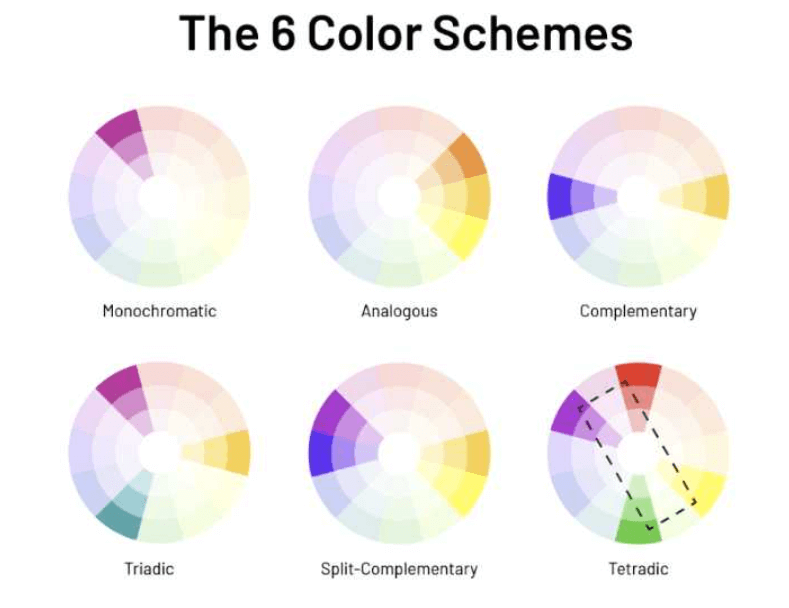
Your color scheme should be carefully considered and planned out ahead of time. It can be helpful to choose a limited palette of colors that you want to use throughout the moodboard. This will help create a cohesive feel and ensure that your design doesn’t become too busy or overwhelming.
- Textures and Materials
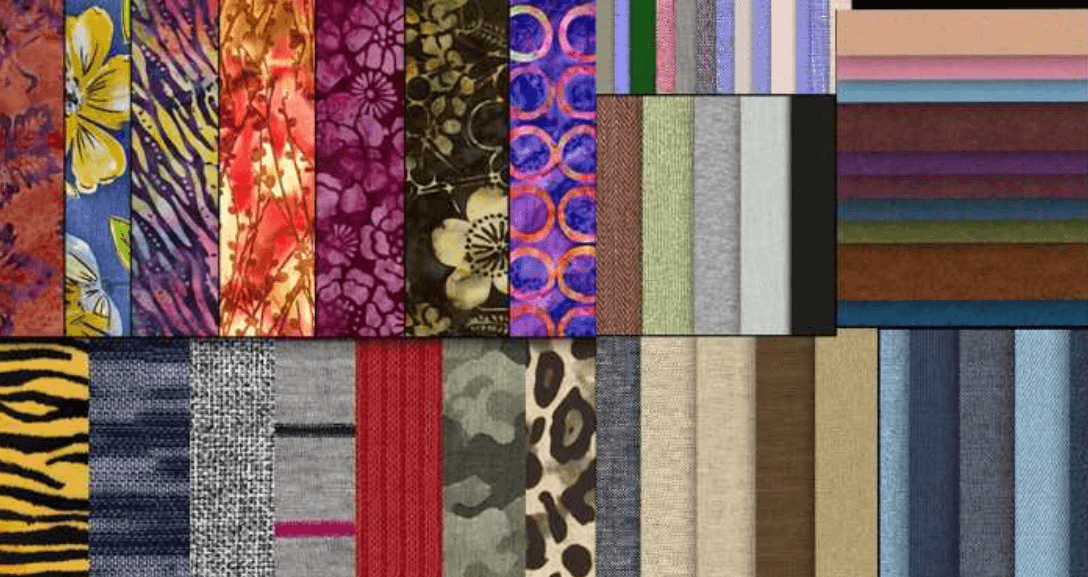
The textures and materials you use are just as important as the colors you choose. To put together a put-together and fashionable style, everything should be carefully examined, from the fabric of your clothes to the textures of your accessories.
- Inspirational Images
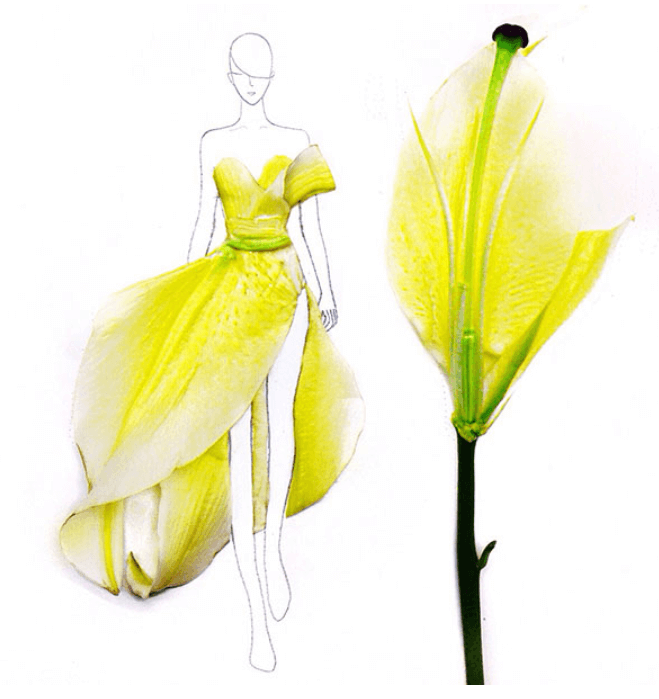
Your moodboard should also contain a variety of images that inspire you. Whatever your design aesthetic, you ought to be able to locate a few images that appeal to you and influence the overall look of the project. These images can be anything from runway photos to magazine editorials, and they’ll help you to stay focused on your vision.
- Harmony & Contrast
Including harmony and contrast within your design creates visual interest and keeps the eye moving. Too much of one can make your design feel static and uninteresting.
- Flow & Balance
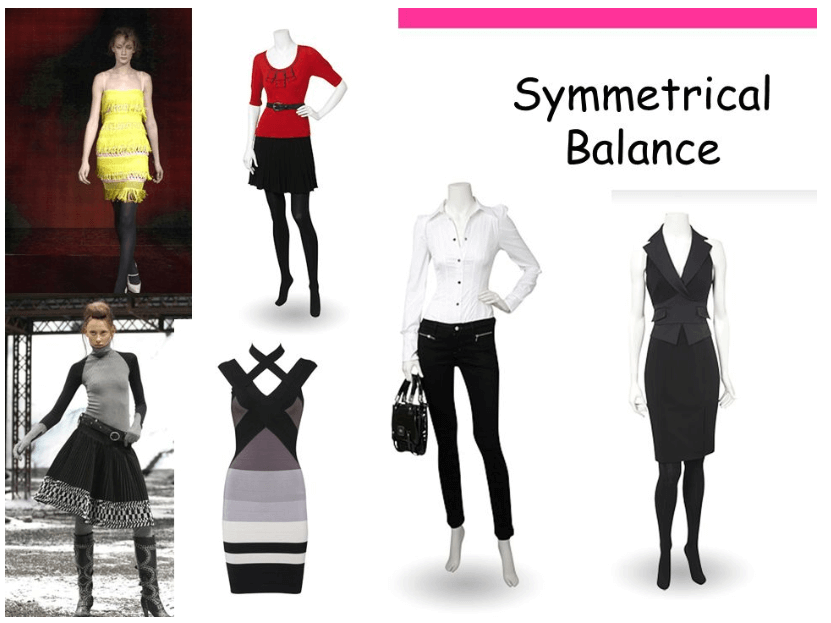
Flow and balance are important factors in any design, but they’re especially important in fashion moodboards. After all, you want your final design to be something that’s both stylish and wearable. To achieve this, your moodboard should have a sense of balance and flow. To produce a harmonious and fashionable design, all aspects must complement one another.
- Repetition & Rhythm
A composition with a nice appearance is made by combining these two ideas. Repeating certain elements throughout the moodboard establishes a sense of rhythm that helps tie the entire design together.
Finalizing your Moodboard
Now that you have collected your inspiring images, it’s time to start putting them together into a coherent moodboard. This can be tricky, as you must find a balance between making your board visually appealing and ensuring that it accurately reflects your concept.
The first step is to decide on your board’s overall size and shape. Will it be square, rectangular, or something more unusual? You can begin arranging your photographs once you’ve chosen a format.
Try to create a cohesive design by grouping similar images together. For example, if you have gathered many images with strong geometric shapes, you could create a section for these on your board.
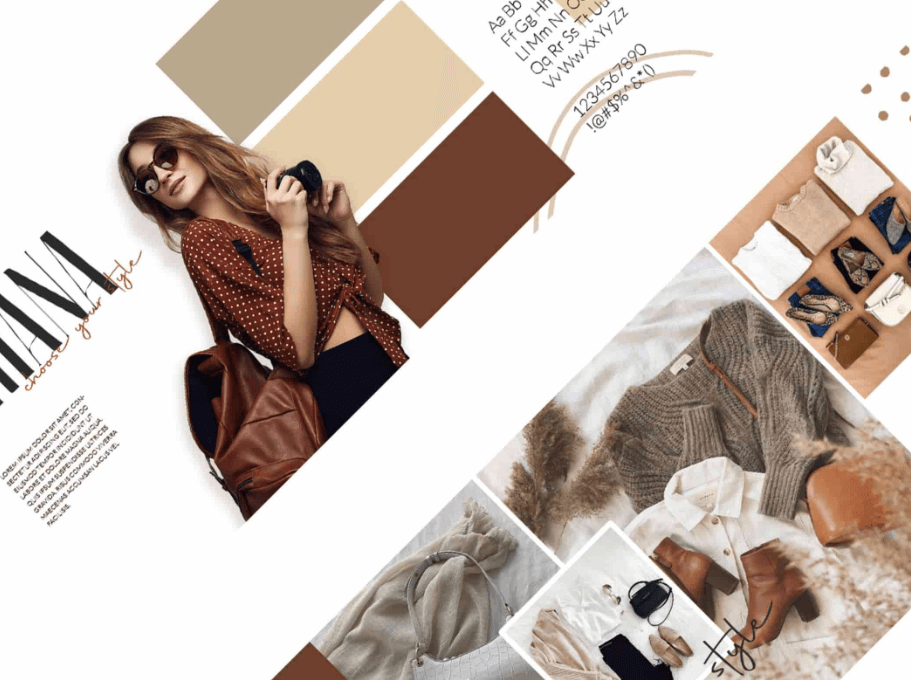
As you arrange your images, consider the overall tone and mood you want to convey. Do you want your moodboard to be light and airy or dark and mysterious? Keeping the mood of your concept in mind will help you to create a board that accurately reflects your ideas.
It’s time to begin adding text if you are satisfied with the layout of your board. Use short phrases or keywords to describe each image and explain how it relates to your concept. You could also add a title or subtitle to help communicate the overall theme of your moodboard.
Please photograph or scan your moodboard once you are satisfied with the outcome so you can refer to it again when working on the design. With a well-crafted moodboard in hand, you will be well on your way to creating a stunning visual concept.
In this digital age, you now have two choices for presenting your moodboard.
Today’s modern fashionista has the world at her fingertips. With technology, you can either email your moodboard to yourself or anyone else.
You can also tweet, post on Instagram, or even create a Pinterest board. You can also use Canva or Adobe Creative Cloud services to design and print your moodboard. You can print it out and hang it on your wall if you prefer the more traditional approach.
Examples
Here are a few moodboard samples to get you started if you’re feeling uninspired:
- This all-blackboard is perfect if you’re going for a refined and luxurious look.
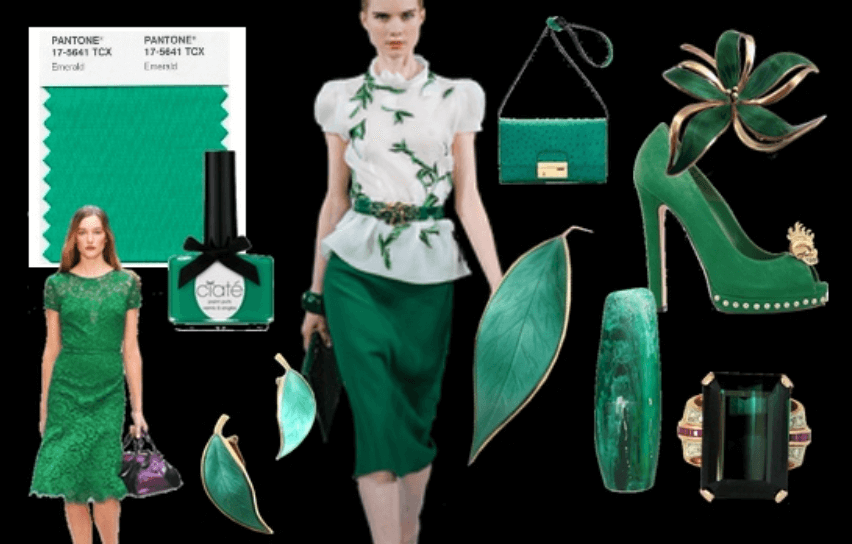
- This board uses a mix of images and illustrations to create a fun and youthful vibe.
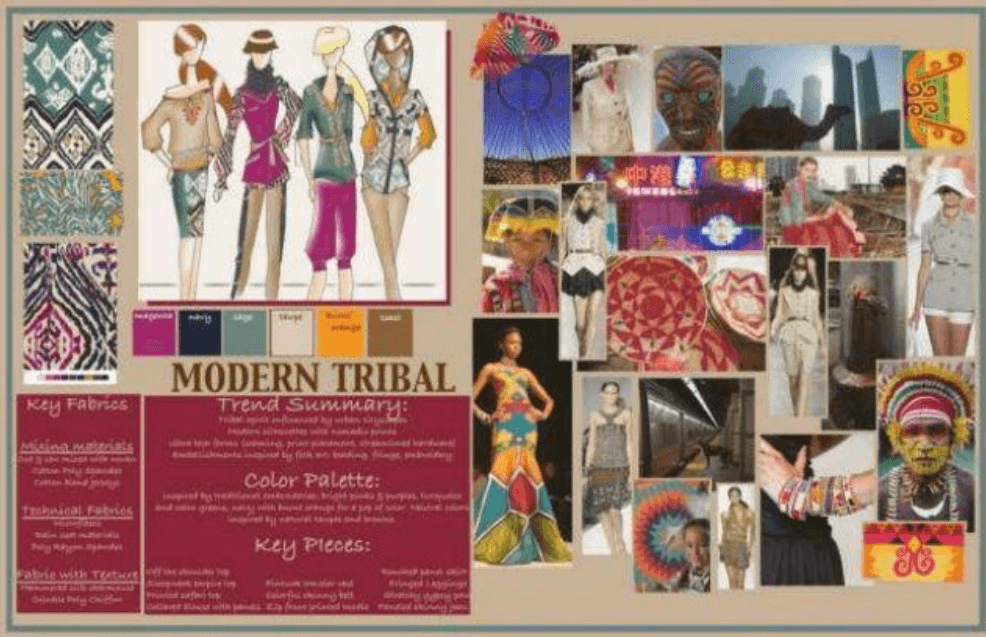
- This minimalistic board would be perfect for a more simplistic design concept.
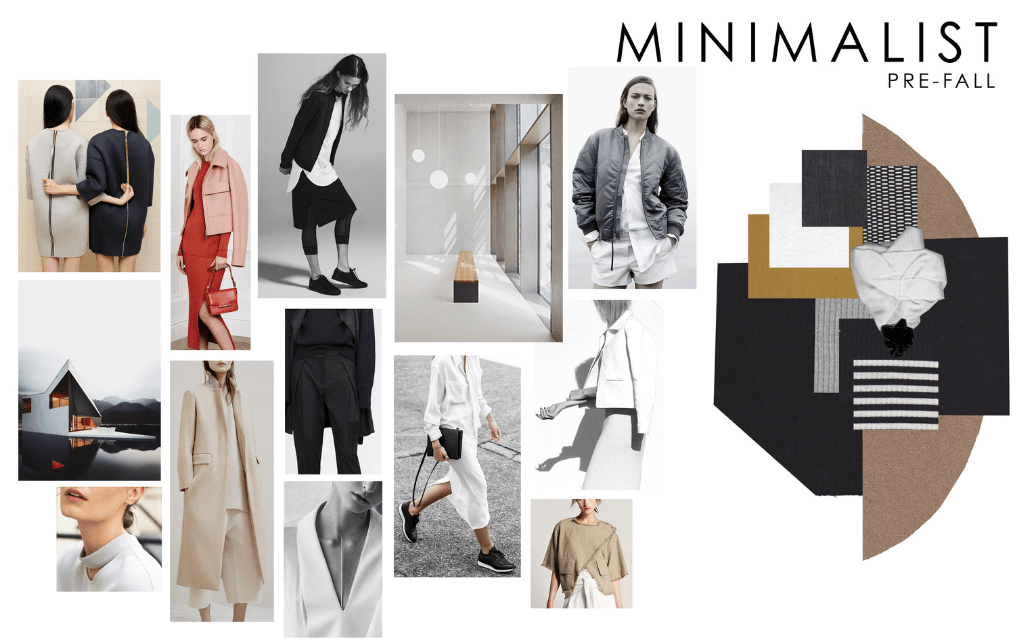
- This bold and bright board is perfect for a summery or tropical-inspired concept.
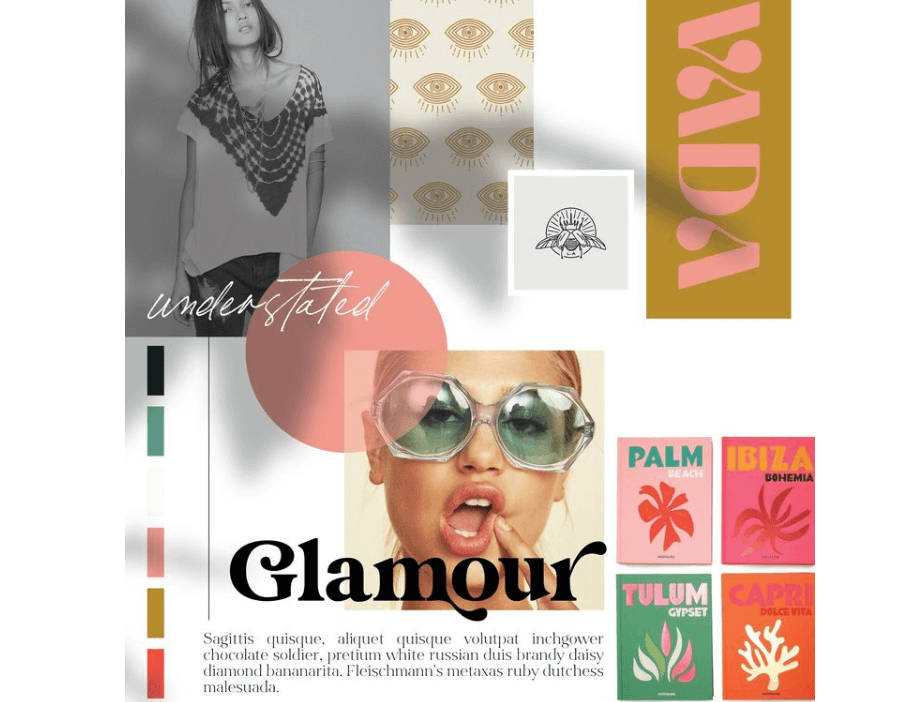
- This dark and moody board would be perfect for a gothic or editorial-inspired concept.
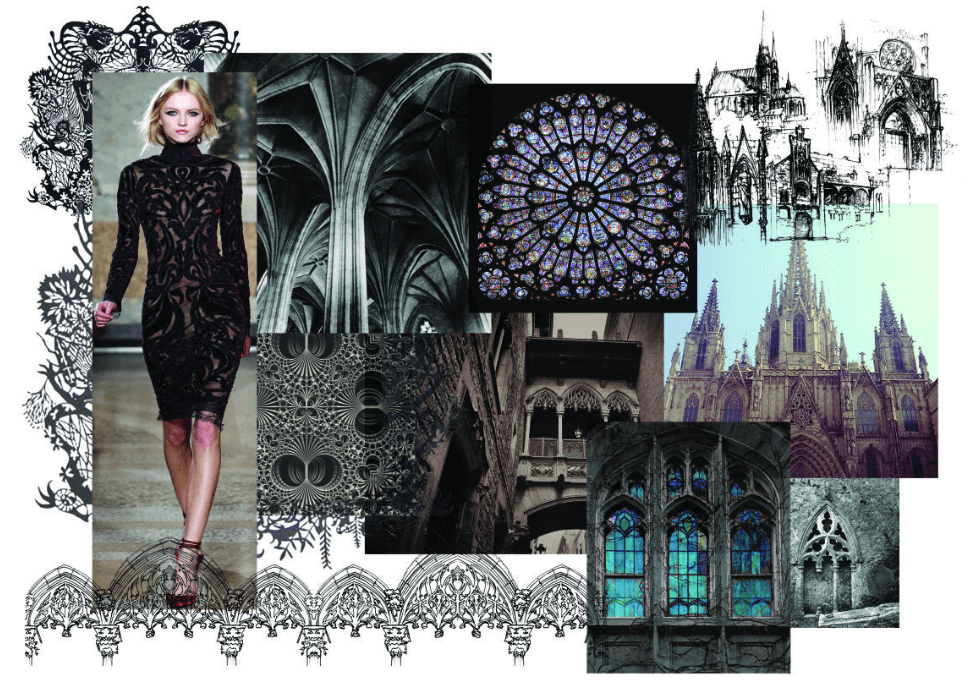
Never forget that there are no limitations when creating a moodboard. So try different things until you discover a look that suits you!
